(PNF) Proprioceptive Neuromuscular Facilitation
1/46
There's no tags or description
Looks like no tags are added yet.
Name | Mastery | Learn | Test | Matching | Spaced |
|---|
No study sessions yet.
47 Terms
PNF
make movement easier/ more efficient
ALL facilitation techniques
Relies on quick stretching and manual resistance of muscle activation of the limbs in functional directions, which often are spiral and diagonal in direction
proprioceptive
having to do with any of the sensory receptors that give information concerning any movement and position of the body
neuromuscular
involving the nerves and the muscles
spiral
diagonal
according to PNF, movement patterns are ___ or ___ in nature and resemble movement in functional activities
verbal
visual
tactile
multisensory cues for PNF include…
principles of PNF
development is centered on the patient’s abilities
normal motor development moves in cervico-caudal and proximal-distal direction
reflex activity dominates early motor behavior and reinforces or supports mature behavior
early motor behavior is spontaneous, rhythmic and reversing, oscillating from mass flexion to mass exertion. rhythmic and reversing movements to reestablish interaction of antagonists
Developing a motor behavior is expressed in an orderly sequence of
total patterns of movement and posture requiring interaction of
component patterns.
Diagonal directions requires 3 components of motion Motor behavior develops sequentially in total patterns. These begin as movements forward, then side/side, proceeds to circular direction and finally advances to diagonal form
Cyclic trends (shifting from flexor to extensor dominance) are noted in motor development. This ultimately leads to balance and reciprocation of movement.
Though normal development is orderly, stages can overlap.
Interaction and balance of antagonists are essential for normal movement and posture
Techniques for facilitation (inhibition) may be used singly or in combination according to the abilities and needs of the client
Frequency of stimulation and repetitions are key to:
• Promote, retain, and enhance motor learning
• Increase strength and endurance.
Goal directed activities plus techniques of facilitation hasten
learning of total patterns
total patterns
It can be used progressively (i.e rolling to develop sitting)
It allows better performance in the presence of pain; attention is directed toward total movement rather than specific movement of a painful part
Include:
Rolling – D1 LE emerges
Crawling – interaction of segments, timing, D2 UE and see emergence of D2 LE
Lower trunk rotation
Bridging
hands and knees rocking
creeping
plantigrade
walking
bilateral patterns
• Combined upper extremity or lower extremity diagonal patterns
symmetrical
asymmetrical
reciprocal
symmetrical patterns
Paired extremities (either UE of LE) perform the same diagonal pattern and
direction
promotes trunk flexion/extension
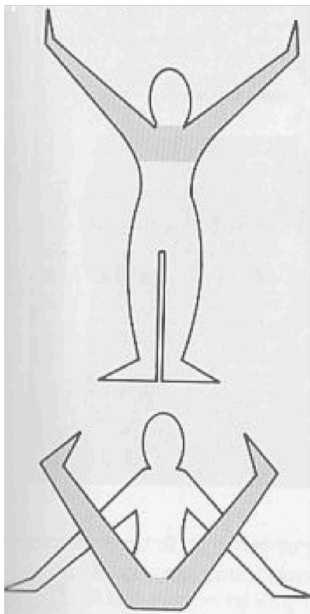
asymmetrical patterns
paired extremities perform opposite diagonal pattern but same direction
facilitates trunk rotation

reciprocal pattern
paired extremities move in opposite diagonal pattern and direction
promotes head, neck, and trunk stability

combines movements of UE/LE
ipsilateral
contralateral
diagonal reciprocal
ipsilateral
extremities of the same side (UE and LE) move in the same diagonal pattern and direction
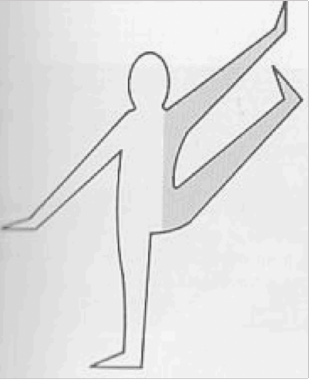
contralateral
aka alternating reciprocal pattern
extremities of the opposite sides move in the same diagonal pattern and direction
extremities moving in the same diagonal patterns and directions while opposite contralateral extremities move in the opposite diagonal pattern and direction

unilateral diagonal patterns
Mass movement patterns observed in most functional activities
• Head, neck, trunk
• Flexion with rotation to the right or left
• Extension with rotation to the right or left
reference points: UE shoulder, LE hip
d1 flexion
Shoulder FLEX, ADD, ER
Forearm - Sup
Wrist - Rad. Flexion
Fingers - flexion
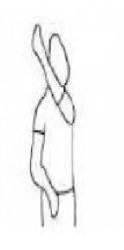
d1 extension
Shoulder EXT, ABD, IR
Forearm - Pro
Wrist - Ulnar. extension
Fingers - Extension

d2 flexion
Shoulder FLEX, ABD, ER
Forearm - Sup
Wrist - Rad. Flexion
Fingers - Extension

d2 extension
Shoulder EXT, ADD, IR
Forearm - Pro
Wrist - Ulnar ext.
Fingers - flexion
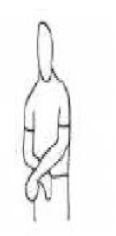
symmetrical bilateral pattern is..
d1 flexion
asymmetrical bilateral pattern is…
d1 flexion on one side and d2 flexion on the other side (idk if this is correct)
chop
D1
hand on top is assisting
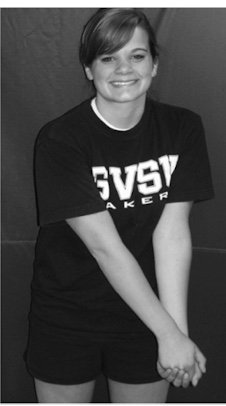
reverse chop
D1
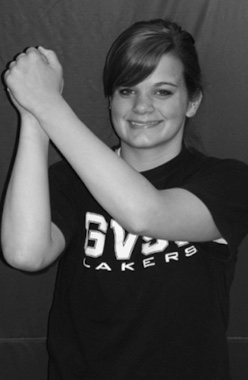
lift
d2
hand on bottom is lifting
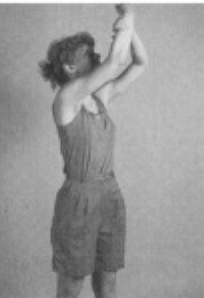
reverse lift
d2

pnf evaluation process
Proximal to distal
• Dominance of tone
• Alignment (midline or shift to one side
• Stability and mobility (more or less needed)
Developmental Postures
• Balance more flexors & extensors
• Move in all planes?
• Able to assume a posture ? Maintain it?
• What sensory input /cues do they respond to?
Analysis of Occupational Performance
PNF intervention techniques
• Proprioceptive /Tactile Stimuli
• Traction and Approximation
• Quick Stretch
• Resistance
• Auditory Stimuli
• Visual Stimuli
proprioceptive/tactile stimuli
manual contacts to muscles are administered in lengthened range
grip only 1 side of pt’s limb at a time for appropriate tactile cuing
lumbrical grip
traction
promotes stability by stimulating joint receptors sensitive to stretch
approximation
promotes joint stability by compression of the joint surfaces
Light joint compression
Or have client sit in a WB position, with UE extended , stabilize elbow, as they lean toward extended UE, joint approximation occurs at elbow joint
quick stretch
-unlike Rood, trying to stimulate the ANTAGONIST
- Always applied to all three components of the diagonal pattern
• Emphasis on rotational components
• Therapist’s entire body is involved in application of quick stretch rather than just hands or arms.
resistance
• Used to improve muscle contraction
• Therapist resists movement while still being part of the overall diagonal movement pattern of the patient.
• Can be applied in many different ways
End of ROM in a pattern
Intermittently while patient moves through pattern
Continuously throughout range of pattern
auditory stimuli
• Tone of Voice
Sharp used for maximum stimulation
Moderate used to reinforce patient’s best effort
Soft when patient has pain or is in aroused state
• Commands
Prepare patient for what is going to happen
Timed to provide maximum stimulation
visual stimuli
• Used to facilitate movement
• Gaze is in direction of movement
• Timed congruent with other facilitory stimuli at initiation of movement
CONTRACT
isotonic contraction
HOLD
isometric contraction
PNF stretching technique: slow reversal (SR)
isotonic agonist contraction followed by isotonic antagonist contraction
prep method
PNF stretching technique: slow reversal hold (SHR)
isometric at end
PNF stretching technique: rhythmic stabilization (RS)
alternating isometric contractions of the agonist and antagonist muscles for
stability and relaxation
PNF stretching technique: alternating isometrics (AI)
straight plane, not diagonal, done in WB position
PNF stretching technique: repeated contractions (RC)
isometric contraction anywhere in the ROM followed by an isotonic contraction to facilitate the agonist and relax the antagonist
PNF stretching technique: rhythmic initiation (RI)
most commonly used type of stretching technique, goal is to help patient initiation
passive motion, than active- assistive, then resistive
PNF stretching technique: contract relax (CR)
sued for lots of spasticity
try to fatigue hypertonic muscles
contract really tight and then relax
PNF stretching technique: hold relax (HR)
similar to contract relax, except no motion or rotation
passively stretch target muscle and then hold it
ways to approach the patient
• Take a position in the diagonal
• Move so that patient can move
• Think of the patients total movement
• Use visual cues to give direction to patients movement
• Place you hands so as to control the patients movement and posture
• Use meaningful word and tone of voice appropriate for the occasion
• Use your whole body to facilitate the patient’s response, not just you arms. watch body mechanics
advantages of PNF
time efficient
tx of multiple joints/ muscles
movement through functional patterns
safe motion
disadvantages of PNF
• Not enough evidence to use PNF as sole treatment in neurorehabilitation
patients.
• PNF stretching is supported by evidence when used to treat “healthy populations”